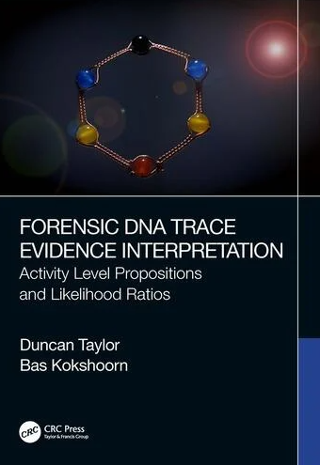New book by Professor Bas Kokshoorn
27 Feb 2024 11:08 | Centre for Applied Research TechnologyWhat can DNA traces reveal about events at a crime scene? Bas Kokshoorn and Duncan Taylor explore this question in their new book. ‘There is a high demand for knowledge on this topic. Hopefully, this book can contribute to that.’
Somewhere in the Netherlands, a shooting incident has occurred. The police have a suspect in mind and decide to search his home. A weapon is swiftly found under a cushion on the couch, matching the type used in the shooting incident and containing DNA from the suspect. It seems like an open-and-shut case: this is the perpetrator. Or is it? The suspect denies ever seeing the weapon before, suggesting someone else must have left it on his couch. The presence of his DNA is explained by his daily use of the couch.

More and smaller traces
Cases like these are becoming increasingly common. ‘We are improving in finding and analysing DNA traces at a crime scene, even those invisible to the naked eye’, says Bas Kokshoorn, professor in Forensic Trace Dynamics at the Amsterdam University of Applied Sciences and Principal Scientist at the Netherlands Forensic Institute (NFI). ‘But with more and smaller traces, we also discover many unrelated to the crime. If a small amount of a suspect's DNA is found at a crime scene, it doesn't automatically mean that person is the perpetrator. The DNA could have ended up there in another way.’
That's why, in cases like the shooting incident, it is crucial to determine how and when traces ended up at a location. Research into the behaviour of biological traces is relatively new, and knowledge was fragmented. This has changed with the book Forensic DNA Trace Evidence Interpretation: Activity Level Propositions and likelihood ratios, co-authored by Kokshoorn and Duncan Taylor, Chief Scientist of Forensic Statistics at Forensic Science South Australia.
Comprehensive approach
The book not only explains the necessary data to determine how traces ended up at a crime scene but also how to systematically bring this information together. ‘There's been a lot published in recent years on the statistical models involved. And much has also been written on trace behaviour, but there was no source consolidating all this knowledge’, says Kokshoorn.

He explains how forensic investigators proceed in a case like the shooting incident. ‘First, they delve into the scenarios presented by the Public Prosecution Service and the suspect. Then, using a statistical model, they assess how well the found traces fit both stories. For example, what is the chance that the suspect's DNA ended up on the firearm through his couch? They also utilise their knowledge of trace behaviour: what is the chance of finding someone's DNA on an object they used a week earlier? They substantiate these probability assessments with experiments and case data.’
The book outlines this process step by step for the first time. The two authors have gathered all the knowledge about trace behaviour and supplemented it with their practical experience. ‘As an expert at the NFI, I deal with this a lot, and Duncan works in the laboratory in Australia', says Kokshoorn. ‘In the book, we use examples from our own practice to explain all the principles.’
Knowledge for professionals and students
The handbook is primarily intended for DNA experts involved in legal cases like the aforementioned shooting incident. ‘We want to provide them with a tool to work with’, says Kokshoorn. ‘There is a high demand for knowledge on this topic. Hopefully, this book can contribute to sharing and further developing that knowledge.’
In addition, the publication targets students. ‘Once they complete their studies, they enter the role of professionals. With this book, we can provide them with the right tools in advance.’ Each chapter ends with exercises to help them engage in self-study.
New insights from research
As the field of trace evidence continues to evolve, the book will be updated and revised in a few years. Currently, Kokshoorn and fellow researchers are working on the project Geen Spoor te Verliezen (No Trace to Waste). As part of this project, they are studying the impact of selecting traces at the crime scene or the packaging and transportation of traces on the research outcome. They also explore how to statistically model this. ‘There is not much information currently available about this, but they are crucial steps in providing a more well-founded answer to what forensic traces can tell us about what happened at the crime scene.’
